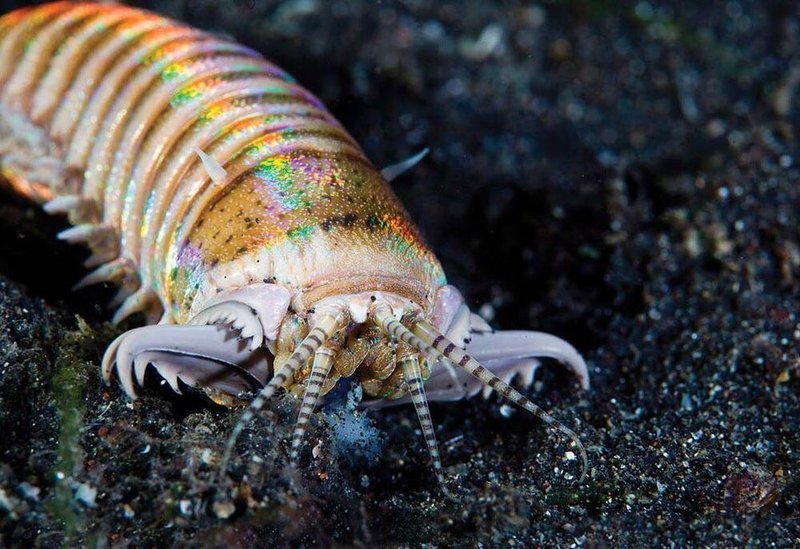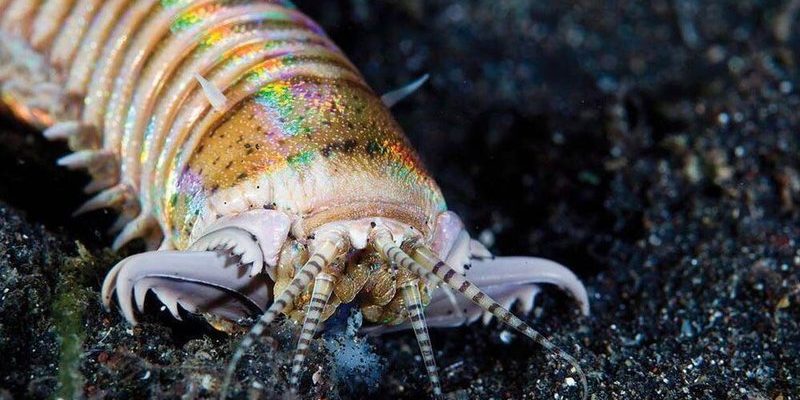
Bristle worms, often mistaken for ugly, slimy creatures, are actually pretty interesting. They play a vital role in the ecosystem of your aquarium or reef tank. Think of them as nature’s clean-up crew, munching on leftover food and dead plant matter. But the real question remains: Are they ever a threat to your happy, healthy fish? Let’s dive into this topic and explore the relationship between bristle worms and fish to clear up any confusion.
What Are Bristle Worms?
Bristle worms belong to the category of segmented worms, scientifically known as polychaetes. You can usually spot them in various colors, ranging from bright red to more muted browns and greens. They have bristles, or setae, on their bodies that give them their name and help them move through the water. These worms can range from just a few inches long to over a foot in length, depending on the species.
They’re often found in marine environments, but some freshwater varieties exist too. Bristle worms are important detritivores, which means they help break down organic matter, keeping the tank clean. Imagine them as tiny janitors, tirelessly working to ensure your aquarium stays healthy.
While they’re beneficial in many ways, you might be wondering if these worms are ever a danger to your fish. Let’s explore that further.
How Do Bristle Worms Behave?
Bristle worms are typically scavengers, so their usual behavior involves feeding on leftovers, algae, and decaying matter. They’re not usually aggressive, preferring to stick to their diet rather than hunt for a meal. This means that as long as there’s enough organic material in your tank, your bristle worms will be happy and harmless.
Sometimes, you might spot them in the evening when your fish are more relaxed and less active. They tend to come out at night to forage, which is when many fish are resting. If you notice a few wriggling around, it doesn’t necessarily mean they’re bothering your fish. Think of them like that roommate who comes home late but doesn’t disturb anyone; they’re just doing their own thing.
However, there are certain situations where bristle worms can become a problem. If your aquarium is overrun with them, or they don’t have enough food, their behavior may change. They could start nibbling on things they shouldn’t, like corals, and potentially even your fish.
Do Bristle Worms Actually Attack Healthy Fish?
Here’s the big question: do bristle worms attack healthy fish? In most cases, the answer is no. Healthy fish are generally not on the menu for bristle worms. These worms don’t have the hunting instincts or physical capability to actively prey on fish. If your fish are well-fed and healthy, they are typically safe from harm.
However, there are exceptions. If a fish is injured, sick, or in a weakened state, bristle worms might take advantage of that vulnerability. In essence, they don’t set out to attack, but they might nibble on fish that can’t defend themselves. It’s like someone sneaking snacks from the pantry — they won’t touch the food in the fridge, but if the pantry is left open and there’s something easy to grab, they might go for it.
Keeping your fish healthy and monitoring their behavior can help prevent any issues with bristle worms. Regular tank maintenance and ensuring a balanced ecosystem go a long way in keeping your fish safe.
Signs of Bristle Worm Overpopulation
You might be wondering, “How do I know if I have too many bristle worms in my tank?” Here are some signs that could indicate an overpopulation issue:
- Visible Overpopulation: If you count more bristle worms than you can count on your fingers, it might be time to take action.
- Coral Damage: If your corals start looking damaged or have bite marks, that’s a red flag.
- Unhealthy Fish: Sick or stressed fish could indicate that bristle worms are becoming more than just harmless scavengers.
- Excess Waste: If your tank appears dirtier than usual, it could mean bristle worms are struggling to keep up with the waste cleaning.
If you spot any of these signs, it’s essential to take a closer look at your tank’s ecosystem. Bristle worms can be beneficial, but when they become too numerous, they can shift from helpful to harmful.
How to Manage Bristle Worms
If you discover that you have more bristle worms than you’d like, don’t panic! There are several ways to manage their population without harming your ecosystem:
1. **Check Your Feeding Habits:** Overfeeding your fish can contribute to bristle worm overpopulation. Make sure you’re only feeding your fish what they can eat in a few minutes.
2. **Increase Competition:** Adding more scavengers, such as shrimps or crabs, can help keep the bristle worm population in check. They’ll help compete for food, ensuring that there’s not too much for the bristle worms.
3. **Manual Removal:** If you feel comfortable, you can try to remove excess bristle worms manually. Use tweezers to grab them and relocate them to another area of your tank.
4. **Regular Maintenance:** Keep up with regular tank cleanings. Siphoning out detritus and dead matter can reduce the food supply for bristle worms, helping to keep their populations in check.
By being proactive, you can manage bristle worms effectively, allowing them to continue their role in your tank without turning into a nuisance.
In summary, bristle worms are generally not a threat to healthy fish. They play an essential role in maintaining a clean aquarium environment. However, when they become overpopulated, they might pose a risk, particularly to weaker or sick fish. Keeping your fish well-fed and your tank clean will help maintain a balance, ensuring everyone — fish and bristle worms alike — can thrive together.
So, the next time you see a bristle worm wriggling about in your aquarium, remember that they’re usually just busy doing their job as nature’s little recyclers. Keep an eye on their population, and your fish will likely remain safe and sound. Happy fishkeeping!

